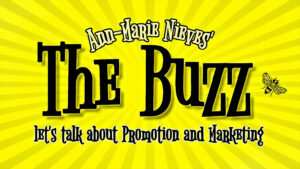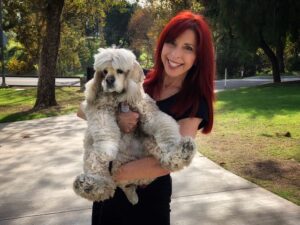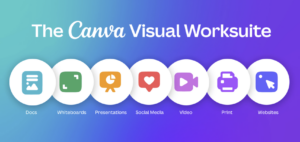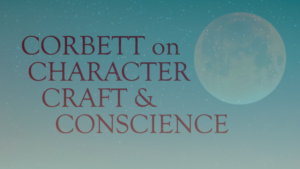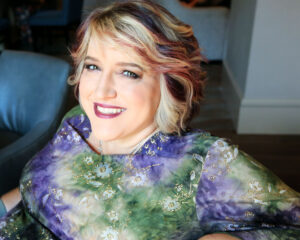Marketing
Kathleen Troy and Dylan
I’m very excited to present today’s Author Up Close featured writer to the WU community. I met Kathleen Troy through her publicist and have been delighted to follow her journey to publication. Kathleen is an author, movie producer, and a writing and law professor at Cypress College, but her passion is dog training. She has combined her love of writing with her love of dogs in her Middle Grade mystery series Dylan’s Dog Squad. Three books in, Kathleen’s learned a lot about the industry, including why it’s important for authors to understand the difference between publishing their work and finding distribution for it. In this Q&A, Kathleen shares lots of valuable insight, and one of the most important lessons she says she’s learned along the way: find good people who can help you achieve your goals.
GW: Thanks for agreeing to share your writing and publishing experiences with the Writer Unboxed community. I like to start by asking writers about their author origin story; it’s kind of like a superhero origin story but with a pen. What’s yours?
KT: Writing has always been a part of my life. When I was growing up, if I had a bad day at school, I just came home and wrote myself a better one. No denial there. In undergrad, I minored in journalism. My father always liked to read my stories. When he was diagnosed with cancer at forty-seven, we were told from the onset it was fatal. So when he was in the hospital, I started writing a murder mystery novel for adults. When I visited with him, I would read him a new chapter. Sadly, he died before I finished the book, and I put it away.
One night I was at a very bad play, and I told my friend that my book was better than the play. He said, “Everyone always says that.” I insisted my book really was better and decided to finish writing it. I got an agent on my first try and an offer on my first submission. I was excited until I learned the offer was to sell the novel outright. It would no longer be mine. I really, really wanted to be published but I turned down the offer. I’d written the book for my father, and I realized that I didn’t want to sell a memory.
GW: You write Middle Grade fiction, and specifically, you’ve written a series about a group of friends and their dog, Dylan, solving mysteries together. How did the idea for the series come about?
KT: The Dylan’s Dog Squad Series is largely based upon Dylan, an American Cocker Spaniel, and his true-life experiences, adventures, and training.
In the series, Casey’s brother Aiden, an American professor living in South Korea, bought Dylan but got frustrated with the dog and sent him to Casey, his twelve-year-old brother in California. Casey is thrilled to have a dog, his mother less so. Casey and Dylan have thirty days: Casey to learn the responsibilities of dog ownership and Dylan to learn to be a good dog—or else. They form an inseparable bond, are never apart, and, in each book, they continue to grow as a unit.
The idea for the […]
Read MoreIn a recent email from author Emily Kimelman, she laid out a whole new model for self-publishing that I found especially intriguing, and I thought the Writer Unboxed community would as well.
Emily is the best-selling author of two series—the Sydney Rye mysteries and the Starstruck thrillers—as well as the Kiss Chronicles urban fantasy series under the name Emily Reed. Spending her early years in the Soviet Union (her father was a foreign correspondent for the Philadelphia Enquirer), she caught the wanderlust bug at a young age and has traveled the world from Mongolia to Costa Rica to Spain and beyond, and she often bases her books on her experiences abroad.
(Personal note: Emily is also my wife’s best friend, and they’ve been “sisters from different misters” since they met at age twelve while attending The Baldwin School in Bryn Mawr, Pennsylvania.)
I recently invited Emily to share her publishing experiences and her unique new venture with our readers.
Why did you originally decide to self-publish?
In 2005, I was in my twenties and coming up with my life plan.
I wanted to write mystery novels because I enjoyed reading them, and writing them seemed like the most fun way to make a living.
I researched how to support myself as an author and decided I’d write a stunningly good book, get an agent, then a publisher. Then they’d take it from there while I wrote in cafes around the world with my dog sleeping peacefully at my feet and my fingers clacking away on my keyboard.
I did write a stunningly good book (it took 5 years), and I did get an agent …but the rest didn’t fall into place until I became my own publisher.
I’m entrepreneurial by nature and watched the self-publishing market emerge from a shameful little corner of the internet into a powerful force traditional publishers were ignoring. So in 2011, when my agent still hadn’t sold my book, I figured I had nothing to lose by going indie.
How have you monetized your books – in particular, share with our readers “how it works” with Amazon.
Retailers like Amazon pay between 30-70% royalties depending on the cover price.
While self-publishing gives authors more control and higher royalties than traditional publishing, retailers don’t share any data—like who bought your books. You’re basically a wholesaler who is allowed to set the retail price.
Also, Amazon runs ads for other products—and books—on your titles’ pages which makes sending your readers there kind of a gamble—they can easily be distracted before clicking the buy button.
How did this part of your career go?
It went great! And I still sell my books on all major retailers.
The better I became at advertising and promoting myself, the more money I made. But I also started to understand how disadvantaged I was compared to others’ selling digital products online.
When you’re spending multi-five figures on ads, and not getting any data from your traffic, you’re paying to give Amazon a lot of customers.
The first month I grossed six figures and retailers kept 35%, I knew it was time to move toward direct sales.
BookFunnel, a delivery service for ebooks that indie authors use to send out ARC copies and reader magnets, integrated with Shopify and other sales platforms a few years ago. But until […]
Read MoreImage – Getty iStockphoto: Phonlamai Photo
Scaring Up Some Audiobooks
Recently, a distributor of digital books – both ebooks and audiobooks – announced that it was adding a new offering for publishers: “AI voicing” for audiobooks. The company could barely clear the word audiobooks before rushing to assure everyone that “AI narration” would never match the primacy of audio work using human readers and production. The caveat, going on and on, came across almost as an apology before any offense had been committed.
True, a certain resistance to the idea of machine-generated audiobooks is hardly eased by such headlines as Synthetic Voices Want To Take Over Audiobooks (Wired, January 27). No, they don’t. Synthetic voices don’t want to take over audiobooks. They don’t want anything. They’re synthetic. But book publishing is an industry that’s never accepted digital developments easily. Even after e-commerce and digital products played a key role in the US market’s comparative success during the still ongoing pandemic, those “synthetic voices” seem to murmur something sinister.
The many vendors now offering machine-generated audio narration know that this is the pushback to expect. It’s a mindfield of emotional reaction. They’re nervous about it.
Some defensiveness isn’t without reason. The business of gifted human narrators – who are actually readers, voice actors, interpreters, not narrators, the term has never been quite right – are supported by many additional workers in important roles. Those workers include sound technicians, audio editors, studio and tracking-booth providers, producers, in some cases directors, and more folks. Jobs are involved, and they comprise a lot of talent and many skill sets. Programs like the Audio Publishers Association support these workers, and the APA’s Audie Awards rightly honor their work in 25 categories.
Nevertheless, there are compelling reasons for publishers to listen to machine-generated audiobook readings. The kind of work they can handle is unlikely ever to be produced in human readings because of the cost factor.
As many publishing professionals readily agree, machine-produced voicings may be best for nonfiction, which is generally thought not to need the emotional and aesthetic nuance of fiction. But of course, in a great many cases, nonfiction is read by the human author, who may be untrained and inexperienced at the microphone. While there’s always someone asserting that those “synthetic voices” feature many mistakes in pronunciation, so does the work of many human authors.
Just days ago, I heard a very fine, prominent nonfiction author in his reading of his own book pronounce scathing with a short a, making that first syllable rhyme with cat. Most of us have had the experience of discovering, red-faced, that we’ve been pronouncing something wrongly for years. The audio edition of one of last year’s most important American political books was at times almost comical in its mispronunciations by its much-praised author. In both machine-generated and human-produced readings, proof-listening is critical to catch these things.
Still, the imperative for publishers regarding audio actually goes beyond nonfiction.
Read MoreIt’s firefly season in my part of the world. As I write this, it’s dusk, and my front yard is just starting to light up. For the next few hours the fireflies will flash their little butts at a much higher concentration in front of my house compared to my neighbors.
I get a better light show in the first half of summer not because my yard is more beautiful or well-kept than others, but because in the two years we’ve owned our house, we haven’t raked or blown away a single leaf. We don’t mow the grass very often, and we don’t do anything to control the population of clover, fleabane, and purple dead-nettle as they slowly take over. Fireflies spend 95 percent of their lives as larva in leaf litter and other dark, moist environments, and they only live for about two months as adults. If we had bagged up all those leaves last fall to be taken away, we would have lost all those larvae.
We’re lucky to live in a place without a homeowner’s association to dictate what makes a yard “attractive,” so we’ve been able to allow nature to reclaim some of what had once been an average suburban yard: a stretch of seeded grass, azaleas bushes (which don’t attract many pollinators, as they bloom too early in the season), and some border grass (an invasive ornamental). When I tell other homeowners I’ve let my yard go wild, they will sometimes joke that it must be so much easier to not have to do yardwork. And, yes, it is easier to not have to spend hours mowing the lawn, raking, pulling weeds, or filling in patchy sod every weekend. But it does take work: we’re constantly cutting back ornamental vines that threaten to choke off pollinator-friendly plants, and uprooting invasive plants that will outcompete native flora if left unchecked.
And that’s one of the major differences between the wild yard and the more traditional manicured lawn: one attempts to dominate and control the landscape. The other works with it. This means that I’ve had to teach myself how to identify the most common plants that crop up in my yard (there are some great apps out there that make this easier than it once would have been). I’ve learned which ones are native and which ones are invasive, which feed local wildlife and pollinators, which enrich the soil when they break down, which offer shelter for beneficial insects in the winter.
As writers, we’re frequently told by other well-meaning industry professionals about the “rules.” I don’t mean grammar rules, bur rather the rules of structure, of story progression, of beats. It’s easy to get bogged down in trying to follow all the rules. Am I hitting all the correct beats for my genre? Does every scene further both the plot and my main character’s internal development? Does each plot point occur the on the exact correct page?
Do these frameworks help create interesting stories? Abso-freaking-lutely. Just as I still put effort into my yard, guides for story structure and genre are worthwhile tools. But—like most things—there are limits to what one can accomplish by sticking strictly to what’s considered “good.” Particularly when we […]
Read More
Please join us in welcoming Victoria Strauss to Writer Unboxed as a new regular contributor. Victoria is not only a multi-published novelist and author of short stories, she is the voice of Writer Beware–a group dedicated to empowering writers by unmasking writing scams and schemes. We’ve been fans of Writer Beware and Victoria Strauss for as long as we’ve existed here as a site, and we could not be happier to have her as a member of the WU team. Welcome, Victoria!
When I do presentations and Q&As, I’m often asked to name the most common scheme or scam writers need to watch out for.
Usually, I have to think a moment before I answer—not just because the universe of writer-focused predation is constantly evolving (for instance, there are far fewer fee-charging literary agents now than there were when Writer Beware was founded), but because the ways in which writers can be tricked and exploited are so many and various that it’s hard to choose.
These days, though, I can respond without hesitation. By far the most prevalent writer-focused scams are solicitation scams.
Solicitation scammers contact writers out of the blue with publishing-related offers that seem too good to be true. A literary agency is interested in your work! A prestigious publisher wants to acquire your book! A film producer wants to turn your novel into a movie! A marketing company can expose you to millions of potential fans!
You know the old adage, though: if it sounds too good to be true, it probably is. In reality, these offers are not about boosting your career or raising your profile. Whatever enticing carrot a solicitation scammer may dangle before you, the real aim is to get your money.
Solicitation scams and schemes are not new. Back in the days of snail mail, costly print vanity publisher Dorrance Publishing was notorious for soliciting submissions from copyright registration and magazine subscription lists. (Dorrance has re-tooled itself for the digital age, so its solicitations now come via email.)
Profiteering contest and awards programs have also long been prolific solicitors (for instance, J.M. Northern Media, which runs multiple high-entry-fee “festivals”), as have bogus Who’s Who registries. Predatory author mill Omniscriptum regularly solicits submissions to its many imprints, and if you write nonfiction, you may have been contacted by Close-up TV News, a pay-to-play “news” program that has been chasing customers for nearly two decades.
Over the past three years, though, the volume of solicitations has exploded, driven by a huge rise in publishing-related scams from overseas, and also by the pandemic, as in-person networking and marketing opportunities for writers have dwindled and online activity has increased. Self-published and small press authors are the solicitors’ favorite marks. But any writer can be a target.
WHAT YOU MAY ENCOUNTER
Fake Literary Agents and Agencies
Real, reputable literary agents—whose inboxes are overflowing with submissions and who have no need to solicit clients–rarely reach out directly to writers they don’t already represent. For scammers, on the other hand, cold-call solicitation is their main recruitment method. And large numbers of them are posing as literary agents and agencies.
Fake agency solicitations typically involve strategically […]
Read More
